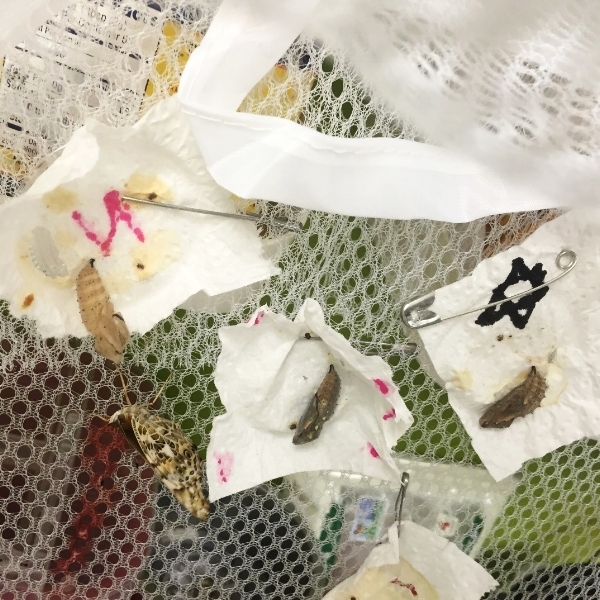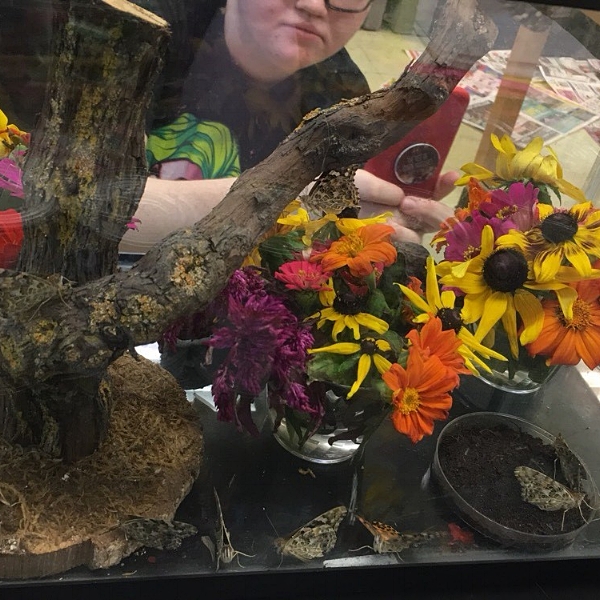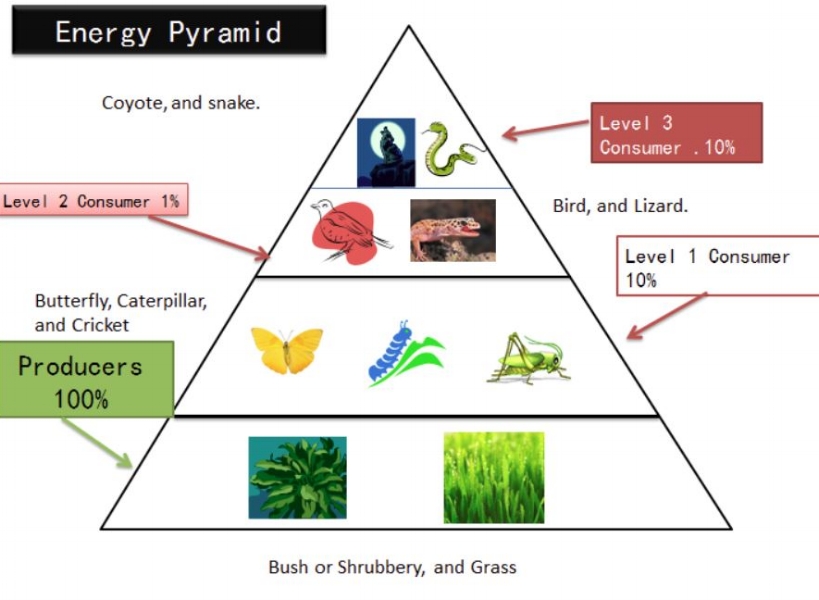AP ENVIRONMENTAL SCIENCE
Teacher: Ms. Kohler
In our AP Environmental Science class students completed a primary consumer and producer lab where they nurtured larva into beautiful Painted Lady butterflies. Students kept their larva in aerated containers and provided them with mallow to nibble. Every day, for two weeks, student’s tracked (1) the weight of their enclosure/larva and habitat (larva, container, lid, food, cloth) and (2) length of their caterpillar, along with other qualitative notes. Students observed their caterpillars growing, but the weight of their enclosure would decrease each day. They learned this was due to respiration. The caterpillars were eating the mallow, breathing, and from the second law of thermodynamics, some energy was lost as heat from the enclosure being an open system. Once the chrysalises were formed, they waited a few days to move them to the mesh butterfly habitat (shown below) for safe emersion. After the butterflies emerged they were moved to the beautiful clear tank that mimics their natural habitat. In this lab students also learned about energy pyramids, the food web, Gross Primary productivity, Net Primary productivity, and biomass. Fun hands on learning!
GW Community School
AP Environmental Science Classes
Ms. Kohler, Teacher
November 10, 2017











